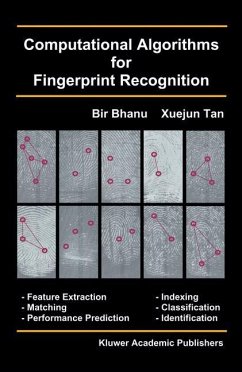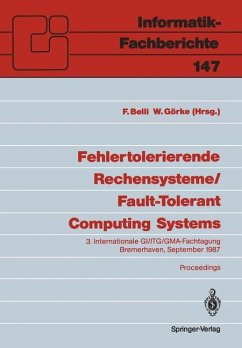
Fingerprint Verification with Microprocessor Security Tokens
Versandkostenfrei!
Versandfertig in 6-10 Tagen
44,00 €
inkl. MwSt.

PAYBACK Punkte
0 °P sammeln!
This book deals with new methods for fingerprint verification. With the advent of public key infrastructure and e-commerce, the demand for reliable user authentication has increased by leaps and bounds. Authentication via PIN and passwords or tokens may become no longer suitable to meet the security constraints. Biometrics is the science of measuring physical or behavioral characteristics, that are suitable for the identification of individuals. Fingerprint verification is one of the most reliable and well-understood biometrics measures. Physical characteristics cannot be stolen, forgotten, sp...
This book deals with new methods for fingerprint verification. With the advent of public key infrastructure and e-commerce, the demand for reliable user authentication has increased by leaps and bounds. Authentication via PIN and passwords or tokens may become no longer suitable to meet the security constraints. Biometrics is the science of measuring physical or behavioral characteristics, that are suitable for the identification of individuals. Fingerprint verification is one of the most reliable and well-understood biometrics measures. Physical characteristics cannot be stolen, forgotten, spied out or transferred. They are tied to the user and permit the implementation of high security systems, that are convenient to use. The design of professional security systems enhanced with biometric user authentication implies that the verifying device is a tamper-proof embedded system. Therefore, it is valuable to perform the verification process in a secure manner with microcontrollers as used in common low-cost security tokens, like smart cards. Several concepts for implementing fingerprint verification within small microcontrollers were developed, enhanced and realized throughout this work. The memory constraints and limited processing power of smart cards and compatible tokens were overcome as reported by tests with databases of fingerprints. The results and the strengths as well as limitations of every method yield conclusions on how to implement secure biometric user authentication with security tokens. The transaction schemes for secure user authentication with biometrics show a major improvement in system security and privacy.
This book shows, that fingerprint verification is possible with standard microcontrollers in today's security tokens. Several original algorithms were developed, implemented and tested against each other. Furthermore, the standard algorithms for fingerprint verification were enhanced with some new aspects to improve the overall matching accuracy. Particularly, a flexible multi-resolution level fingerprint matching algorithm was derived and implemented. It combines the verification of minutiae, ridge counts and pores while keeping the template storage requirements in a range that is appropriate for embedded tokens.
This book shows, that fingerprint verification is possible with standard microcontrollers in today's security tokens. Several original algorithms were developed, implemented and tested against each other. Furthermore, the standard algorithms for fingerprint verification were enhanced with some new aspects to improve the overall matching accuracy. Particularly, a flexible multi-resolution level fingerprint matching algorithm was derived and implemented. It combines the verification of minutiae, ridge counts and pores while keeping the template storage requirements in a range that is appropriate for embedded tokens.












